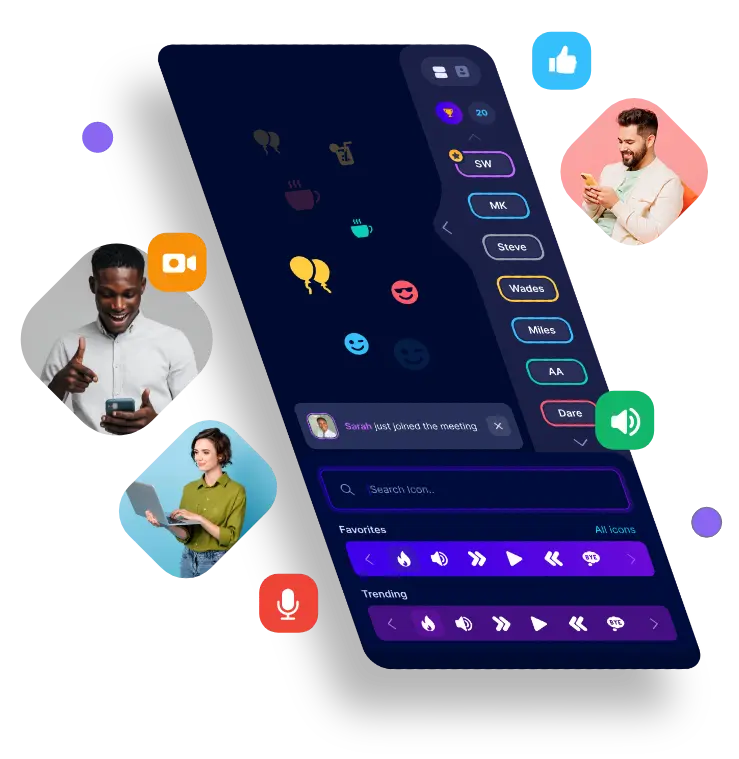
To ensure everyone is on the same page and aligned towards common goals, many companies embrace the concept of the "all hands meeting." But what exactly is an all hands meeting, and why has it become an integral part of modern corporate culture? In this blog post, we will delve into the essence of all hands meetings, exploring their purpose, benefits, and best practices.
Defining the All Hands Meeting:
An all hands meeting, also known as a town hall meeting or company-wide gathering, is a regular event that brings together every member of an organization, from top-level executives to front-line employees. Unlike departmental or team meetings, all hands meetings involve the entire company, providing a platform for sharing updates, fostering transparency, and strengthening the sense of unity within the organization.
The term "all hands" has its origins in naval and maritime contexts, specifically in the realm of sailing and warfare. It refers to a situation where all members of a ship's crew are called upon to participate in a particular task or emergency. The term emphasizes the necessity of everyone on board being actively involved and ready to assist.
All Hands: : characterized by the participation or contributions of all individuals in a group
Merriam-Webster.com Dictionary
Purpose of All Hands Meetings:
Sharing Company Updates: All hands meetings serve as a vital channel for disseminating important information, such as financial results, strategic plans, new product launches, or organizational changes. This ensures that every employee receives the same message simultaneously, eliminating communication gaps and preventing the spread of misinformation.
Alignment and Unity: By bringing everyone together under one virtual or physical roof, all hands meetings create a sense of unity and shared purpose. They allow employees to connect with colleagues from other departments, breaking down silos and promoting a holistic understanding of the company's mission and vision.
Transparency and Trust: Open and transparent communication builds trust within an organization. All hands meetings provide an opportunity for leadership to share successes, challenges, and even failures openly. This transparency encourages employees to feel more engaged and valued, fostering a culture of trust and psychological safety.
Engaging and Motivating Employees: All hands meetings can be used as platforms to recognize outstanding contributions, celebrate achievements, and showcase employee success stories. By highlighting individual and team accomplishments, these meetings inspire and motivate the workforce, boosting morale and reinforcing a positive company culture.
Best Practices for Effective All Hands Meetings:
Frequency and Consistency: Establish a regular schedule for all hands meetings, ensuring they occur at predetermined intervals, be it monthly, quarterly, or annually. Consistency enables employees to anticipate and prepare for these gatherings, maximizing attendance and engagement.
Clear Agenda and Objectives: Clearly communicate the purpose, agenda, and expected outcomes of the meeting in advance. This allows employees to come prepared, ensuring a focused and productive discussion during the gathering.
Two-Way Communication: Encourage employee participation and engagement by creating opportunities for questions, feedback, and discussion. Consider incorporating interactive elements like live polls or Q&A activities in to enhance engagement and involvement.
Engaging Presentations: Use visual aids, multimedia, and storytelling techniques to make presentations more engaging and impactful. Incorporate relevant data, anecdotes, and real-life examples to help employees connect with the information being shared.
Virtual Inclusion: If your organization has remote or distributed teams, ensure that all hands meetings are accessible and inclusive for all employees, regardless of their location. Leverage technology platforms that support virtual participation, and consider time zone differences when scheduling.
How to Incorporate Technology:
In today's fast-paced digital world, it is essential for organizations to adapt and leverage technology to enhance communication and collaboration. One crucial aspect where technology can make a significant impact is in all-hands meetings.
- Interactive Presentation Tools: Gone are the days of boring slide decks and one-way presentations. With interactive presentation tools, such as Poll Everywhere, Nearpod, Slido or Google Slides Q&A, you can encourage active participation from your team. These tools allow attendees to ask questions, provide feedback, and participate in live polls, making the meeting more engaging and inclusive. For instance, you can use Townhall to gather instant feedback on specific topics, or Meeting Pulse to crowdsource questions for Q&A sessions, ensuring that everyone's voice is heard.
- Video Conferencing Platforms: In today's remote work culture, it's crucial to ensure that everyone, regardless of their location, can participate in the all-hands meeting. Video conferencing platforms like Zoom, Microsoft Teams, or Google Meet enable seamless virtual collaboration. By utilizing these platforms, you can connect teams from different offices, remote workers, or even international colleagues. Encourage team members to turn on their video cameras to foster a sense of connection and engagement, and utilize breakout rooms for smaller group discussions and brainstorming sessions.
- Live Streaming and Recording: To ensure that everyone has access to the all-hands meeting, consider live-streaming the event. Platforms like YouTube Live or Facebook Live can provide a secure and easily accessible channel for employees to watch the meeting in real-time. Additionally, record the meeting and make it available for later viewing, allowing those who couldn't attend the live event to catch up. This flexibility ensures inclusivity and allows individuals to access the content at their convenience.
- Gamification and Rewards: Make your all-hands meeting more interactive and enjoyable by incorporating gamification elements. Use platforms like Townhall and Slido to create quizzes related to company updates, industry trends, or even fun trivia about your organization. Offering rewards or small incentives for top performers can increase engagement and create a sense of friendly competition among team members. Gamification adds an element of excitement and helps reinforce key messages while making the meeting more memorable.
- Collaboration and Communication Tools: To foster collaboration beyond the meeting itself, leverage collaboration and communication tools like Slack or Microsoft Teams. Create dedicated channels or spaces for follow-up discussions, feedback sharing, or action item tracking. This enables employees to continue the conversation, collaborate on projects, and stay aligned even after the all-hands meeting concludes.
Evaluating the all hands meeting:
Collecting data and evaluating the success of an all-hands meeting is crucial to understand what worked well, and what did not.
All company meetings have a high cost to the organization and an oversized impact on employee engagement. Collecting data and evaluating the success of an all-hands meeting is crucial to understand what worked well, and what did not. What should you evaluate?
- Measure Engagement and Satisfaction: Data collection allows you to gauge the level of engagement and satisfaction among attendees. By obtaining feedback through surveys or polls, you can assess how well the meeting resonated with participants, whether they found it valuable, and if they felt their questions and concerns were addressed. Understanding the level of engagement and satisfaction helps identify areas for improvement and ensures that future meetings meet the needs of the employees. Townhall is a first of it's kind to use a research-based process to measure engagement live in the meeting.
- Assess Communication Effectiveness: All-hands meetings serve as a platform for disseminating important information, updates, and company goals. By evaluating the success of the meeting, you can assess the effectiveness of the communication strategies used. Did the attendees understand the key messages? Were the objectives of the meeting clearly conveyed? Evaluating communication effectiveness helps identify any gaps or misunderstandings, allowing for better communication in future meetings.
- Measure Alignment and Understanding: An all-hands meeting aims to align the entire organization around common goals and objectives. Collecting data helps assess the level of alignment and understanding among employees. By analyzing the feedback and survey responses, you can determine if the meeting successfully conveyed the organization's vision, mission, and strategic initiatives. Understanding the level of alignment helps identify potential areas of miscommunication or confusion that can be addressed in subsequent meetings or communication efforts.
- Identify Areas for Improvement: Evaluating the success of an all-hands meeting helps identify areas that need improvement. Whether it's the meeting format, content delivery, or engagement strategies, data collection provides insights into what worked well and what needs adjustment. It allows you to make informed decisions on how to enhance future meetings and optimize the impact they have on the organization.
- Align Meeting Objectives with Organizational Goals: Data collection and evaluation enable you to align the objectives of the all-hands meeting with the broader goals of the organization. By analyzing the feedback and understanding the impact the meeting had on employees, you can ensure that future meetings are designed to address specific organizational needs and challenges. This alignment enhances the overall effectiveness of the all-hands meeting and reinforces the organization's strategic direction.
- Justify Resources and Investment: All-hands meetings often require significant resources, including time, effort, and expenses. By collecting data and evaluating the success of these meetings, you can justify the resources and investment allocated to them. Concrete data on the meeting's impact and outcomes can be shared with stakeholders, leadership, or decision-makers to demonstrate the value and return on investment (ROI) of organizing such events.
All hands meetings are powerful tools that facilitate open communication, alignment, and unity within organizations. By fostering transparency, providing a forum for sharing updates, and celebrating successes, these gatherings create a shared sense of purpose and a more engaged workforce. Implementing best practices, such as clear communication, interactive sessions, and virtual inclusion, can further enhance the effectiveness of all hands meetings, ensuring that they become a valuable and integral part of your company culture.

